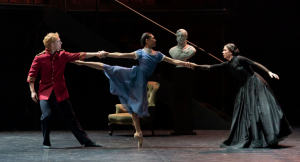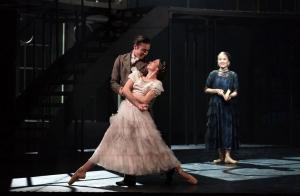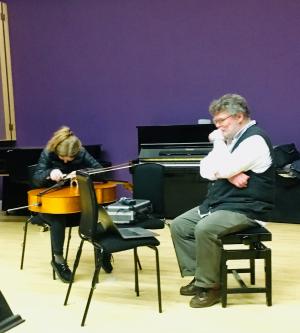Victoria
Full-length ballet in 2 Acts
Commissioned by Northern Ballet
Choreography by Cathy Marston
Performed by the Northern Ballet Sinfonia under the direction of conductor, Jonathan Lo.
World Premiere: The Grand, Leeds, 9th March 2019.
The music for Cathy Marston’s Ballet Victoria
Philip Feeney writes
I have been fortunate enough to collaborate with Cathy Marston on several recent new works, among them Jane Eyre for Northern Ballet, The Suit for Ballet Black, and Lady Chatterley’s Lover for the Grand Ballet Canadien de Montréal. These works involved constructing a score whereby existing music is offset by original compositions allowing for an expanded and wide-ranging musical language capable of supporting the ballet’s narrative.
In many ways Victoria follows the same plan, except that whereas in Jane Eyre the period music was provided by Schubert and Fanny Mendelssohn, here it is all Feeney, developed from the soundworld and motifs set out in the opening scenes. In this way, whatever the musical style being referenced, the music feels fully integrated because it is ultimately all derived from the same thematic material, acting like a giant set of theme and variations, in which the same themes and motifs are revisited in many different guises.
Such an approach allows for a flexible stylistic palette, at times assuming a musical style of the Victorian period and at other times one that is contemporary and dissonant depending on the psychology of the scene. This ability to inhabit more than one musical world is entirely apposite for the detailed synopsis created by Marston and Uzma Hameed, which by focussing on Queen Victoria’s diaries, traces the story retrospectively, and is therefore seen from different points in time.
The diaries mean that the chronology is not so much linear as episodic, with scenes, particularly in Act 2 often separated by links that are out of period, that are more minimalist in conception, acting as a musical representation of a turn of the diary’s page. The sound that depicts the nib that we hear periodically I was able to create electronically from the sounds of a cello.
While very closely thematically organized, the themes do not have a precise signification, apart from the opening trumpet theme, which, yes, applies to Queen Victoria, but even more specifically to royalty and to the public state in general. The music for Prince Albert is centred around the romantic piano, on which he was known to be accomplished. Indeed, I was excited to find that Princess Beatrice was herself a composer and toyed with the idea of feeding some of it into the score. But it appeared that she herself had decreed that the music should not receive a public performance, a sentiment which I felt had to be respected.
At the end of the ballet there is a strong sense of redemption. Whatever the signification of the questioning trumpet theme that opens the ballet, we know that by the gentle closing bars of the score that that question has been answered.
images:
1. Victoria Act 1, image by Emma Kauldhar. (Dancers: Abigail Prudames, Pippa Moore, Mika Akuta, Sean Bates)
2. Victoria Act 2, image by Emma Kauldhar. (Dancers: Abigail Prudames, Joseph Taylor)
3. Mimi Harmer creating nib-scratching audio at the Leeds College of Music. image: Andrew Dunlop.



